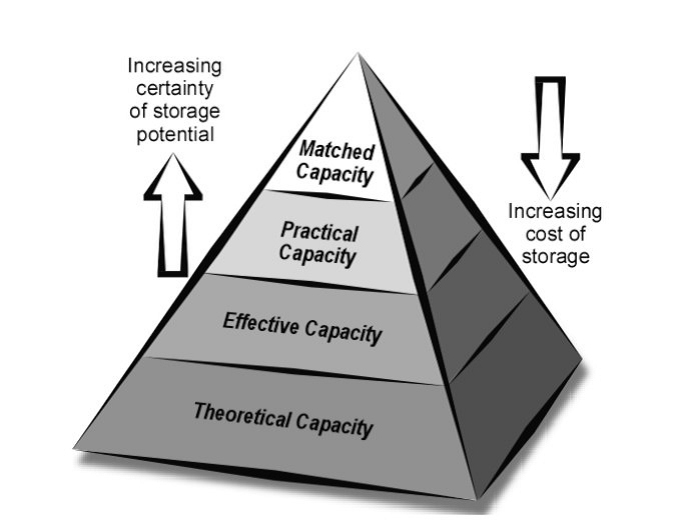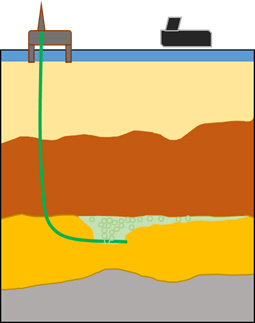Insights and Commentaries
East and Southeast Asian countries unite to drive carbon dioxide storage
15th May 2015
Topic(s): Carbon capture, Engineering and project delivery, use and storage (CCUS)
In this Insight the Global CCS Institute's Chris Consoli, Senior Adviser for Storage (Asia Pacific) discusses methodologies for selecting geological carbon dioxide storage and estimating storage capacity and their relevance to East and Southeast Asia.
A recent report published by the Coordinating Committee for Geoscience Programs in East and Southeast Asia (CCOP) is a major step towards a uniform approach in understanding the region’s CO2 geological storage (CGS) potential. The report, Guideline on the Methodologies for Selecting Geological Carbon Dioxide (CO2) Storage and Estimation of Storage Capacities is a key deliverable of the CO2 Storage Mapping Program (CCS-M). As the name implies, the report identifies a standard methodology by which Member Countries from CCOP will undertake for their geological storage assessments that will ensure the results are comparable across countries. CCOP is comprised of 13 Member States (soon to be 14) across Asia.
The goal of the CCS-M program is for member countries to develop the knowledge and skills to undertake storage assessments and to produce an Atlas. The Atlas will identify the storage capacity in the CCOP group of nations region, based on country-wide geological storage assessments. This is a critical first step in storage assessment, i.e. throwing the net wide with a regional assessment, and then refining the geological characterisation and storage capacity estimates to increasing degree of accuracy, until a specific storage site is identified. Figure 1 identifies this incremental approach. The CCOP Guideline is adopting best practice by using a modified Bachu (2003) basin screening method of the sedimentary basins. The Bachu method uses a series of geological, engineering, and economic criteria to classify, then rank basins for their CO2 geological storage potential. The Guideline identifies that basins with a higher likelihood for success should be targeted (i.e. basins in oil and gas provinces and deeper than 800m). This approach is similar to other national storage assessments (e.g. Australia, Canada) and can rapidly provide evidence-based assessments adapted for local conditions.

Figure 1. Techno-Economic Resource Reserve pyramid (modified From CSLF, 2007).
The CCOP Guideline recommends starting with estimating theoretical capacity, the lowest tier of the pyramid, and the capacity method most suitable for regional, basin-scale assessments. Theoretical capacity volumes focus on the suitable rocks for storage, called a reservoir (rocks with the ability to flow fluids through them), but do not take into account economic, regulatory or any practical/ realistic geological barriers. Theoretical capacity volumes also assume that CO2 will fill all of the reservoir's pore space, generally in the entire basin. However, even when not including regulatory or economic constraints, it is unrealistic to think that the entire available pore space will be filled by the CO2 as it flows through the rocks; there will almost always be factors that inhibit the CO2 filling up all the available pore space. Therefore, most storage assessments use what is called an ‘efficiency factor number’. This number (or range of numbers) identifies a basin-wide percentage of pore space that could theoretically be used by the injected CO2.
Conceptually this makes sense, but because it has such an impact on the final capacity estimate, the actual efficiency factor number is often hotly contested. Nevertheless, it remains the best (and widely adopted) method to date for basin-wide regional assessments (see What are the limitations of using an efficiency factor?).
The CCOP Guidelines recommend a conservative to optimistic range of 0.1 to 5% as the ‘efficiency factor’ to calculate the capacity. A single volumetric calculation across all basins in the region will provide a basis for comparison and better regional planning.
The Global CCS Institute sponsored Phase 1 of the CCS-M program. This included the development of these Guidelines and a series of capacity development workshops. At these workshops geologists and engineers from the CCOP Member Countries, got the opportunity to discuss their approach and to adapt their methodology whilst drawing on the experience of international experts.
The CCS-M program is currently focused on undertaking storage assessments in a series of case study countries: Indonesia, Malaysia, and China. These countries have significant emissions, but with potential for significant storage space.
What are the limitations of using an efficiency factor?
The amount of pore space the injected CO2 will occupy in a reservoir (or storage efficiency factor) is a controversial aspect of any CO2 geological storage assessment. The first question often asked at any forum is - why was ‘X’ used as an efficiency factor?
Using an efficiency factor is aimed at identifying a more realistic storage estimate. In many calculations the assumption is that CO2 will fill the entire reservoir when in fact, the actual amount CO2 occupying the pore space when injected, is limited. This is due to a variety factors including buoyancy and opposing pressure of the surrounding reservoir water and rock; CO2 usually accumulates near the injection well area and the top section along the reservoir-seal boundary (See image below). Using a standardised range of efficiency factors that cater to the variability observed in the reservoir does enable comparisons between basins and nations.

CO2 is stored in deep porous geological formations overlain by impermeable caprock. Image: Global CCS Institute
An efficiency factor may not always reflect the true CO2 storage capacity in the reservoir, leading to less-accurate capacity estimations. Over estimation or under estimation of an efficiency factor, and therefore the CO2 capacity estimate, can lead to poor planning for national strategies, especially in source to sink matching exercises. Moreover, when large estimates are published then subsequently lowered on further exploration, it can reduce confidence in the entire process for CO2 storage prospectivity assessment. More reliable capacity calculations can only ever really be performed at the site you plan to inject at. This should only ever take place after gathering data specific for the rock you plan to inject into, after detailed injection models are run. Economically (or practically), you cannot gather sufficient data for an entire basin, nor can accurate simulations be run at that scale so an efficiency factor helps us to provide a best estimate.
For the purpose of planning and the deployment of CCS projects, as well as that of international financial markets and the regulator, a unified approach comparable to the oil and gas industry’s reserves and resources reporting is desirable. Methods not using an efficiency factor are available, but given the momentum of using volumetric calculations of storage capacity with an efficiency factor, perhaps what is needed is just a more realistic number to apply. For poorly characterised reservoirs with little data at the basin-scale, I would recommend no greater than 1% of total pore space.
References
- Bachu, S. (2003). Screening and ranking of sedimentary basins for sequestration of CO2 in geological media in response to climate change. Environmental Geology, 44(3), 277–289.
- CSLF (Carbon Sequestration Leadership Forum). (2007). Phase II Final Report from the Task Force for Review and Identification of Standards for CO2 storage capacity, CSLF-T-2007-04, June 15, available at: http://www.cslforum.org/publications/documents/PhaseIIReportStorageCapacityMeasurementTaskForce.pdf (Accessed December 2014).